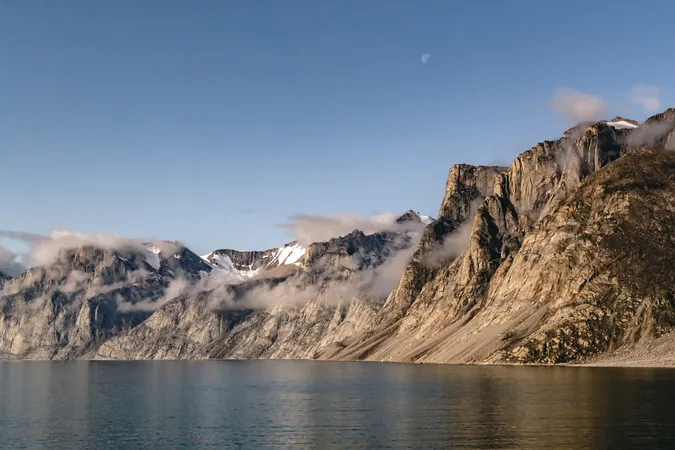
Unraveling the Arctic Carbon Conundrum: Surprising Insights from Decades of Research
2024-10-03
Author: Wei
Introduction
In a groundbreaking study led by researchers from Colorado State University, new insights have emerged regarding the intriguing relationship between plants, microbes, and soil nutrients in Arctic ecosystems. This research provides a deeper understanding of how significant carbon reservoirs may be affected by the thawing of Arctic permafrost, an alarming consequence of climate change.
The Carbon Reservoir in the Arctic
The Arctic's soil is believed to harbor nearly double the amount of carbon currently present in the atmosphere. As climate change continues to cause thawing in these northern regions, scientists have been increasingly worried about the substantial release of carbon dioxide and methane—greenhouse gases that can exacerbate global warming. A key player in this carbon release is the region’s microbial population, which is significantly influenced by rising temperatures and changing ecosystem dynamics.
Complex Dynamics of Carbon Cycling
While previous studies have primarily focused on the direct effects of warming on soil carbon stocks, this recent research sheds light on how shifts in plant life, vegetation composition, and nutrient balances in the soil also play crucial roles. Published in the journal Nature Climate Change, the findings emphasize the complexities of carbon cycling in these changing environments.
The Role of Shrub-Dominance in Carbon Retention
One of the most significant discoveries relates to a phenomenon referred to as "shrub-ification." The increase in shrub dominance in Arctic landscapes may, intriguingly, help retain more carbon in the soil. Co-author Laurel Lynch from the University of Idaho pointed out, "The ecosystem is a complex interplay of factors, and we must consider all the interacting components to understand how carbon dynamics are changing."
Long-Term Ecological Observations
The team examined soil samples from a long-term ecological experiment at the Arctic Long-Term Ecological Research site near Toolik Lake, Alaska. Initially, when nutrients were added to the soil, it led to a notable loss of carbon due to enhanced microbial decomposition. However, astonishingly, after 35 years of continuous nutrient application, the carbon levels in treated plots either stabilized or even exceeded those found in control plots—revealing a reversal of the earlier trend.
Implications of Ecosystem Changes
However, not all consequences of these changes are benign. Although increased shrubs may preserve soil carbon, the dominance of certain species can lead to reduced biodiversity in plant communities, affecting various Arctic animal habitats and food sources. Lynch cautioned, "A loss of plant diversity due to one species outcompeting others can have far-reaching effects throughout the ecosystem."
Conclusion and Future Directions
The implications of this research paint a complicated picture of how climate change may reshape Arctic environments—not just in terms of carbon emissions but also regarding ecosystem health and biodiversity. Lauren Gifford, associate director of CSU's Soil Carbon Solutions Center, remarked on the study's necessity for further, detailed modeling efforts to anticipate future conditions. "With climate change's unpredictable nature, our understanding is still nascent," she stated.
Call for Continued Research
As our climate continues to warm, the need for comprehensive research on Arctic carbon dynamics has never been more urgent. Machmuller hopes that her findings will spark increased interest and exploration into this critical area. "Understanding how carbon behaves in the Arctic is vital as we seek ways to manage and mitigate climate change," she concluded. "Yet we remain uncertain about what the future holds for carbon storage in these vital ecosystems."


 Brasil (PT)
Brasil (PT)
 Canada (EN)
Canada (EN)
 Chile (ES)
Chile (ES)
 España (ES)
España (ES)
 France (FR)
France (FR)
 Hong Kong (EN)
Hong Kong (EN)
 Italia (IT)
Italia (IT)
 日本 (JA)
日本 (JA)
 Magyarország (HU)
Magyarország (HU)
 Norge (NO)
Norge (NO)
 Polska (PL)
Polska (PL)
 Schweiz (DE)
Schweiz (DE)
 Singapore (EN)
Singapore (EN)
 Sverige (SV)
Sverige (SV)
 Suomi (FI)
Suomi (FI)
 Türkiye (TR)
Türkiye (TR)